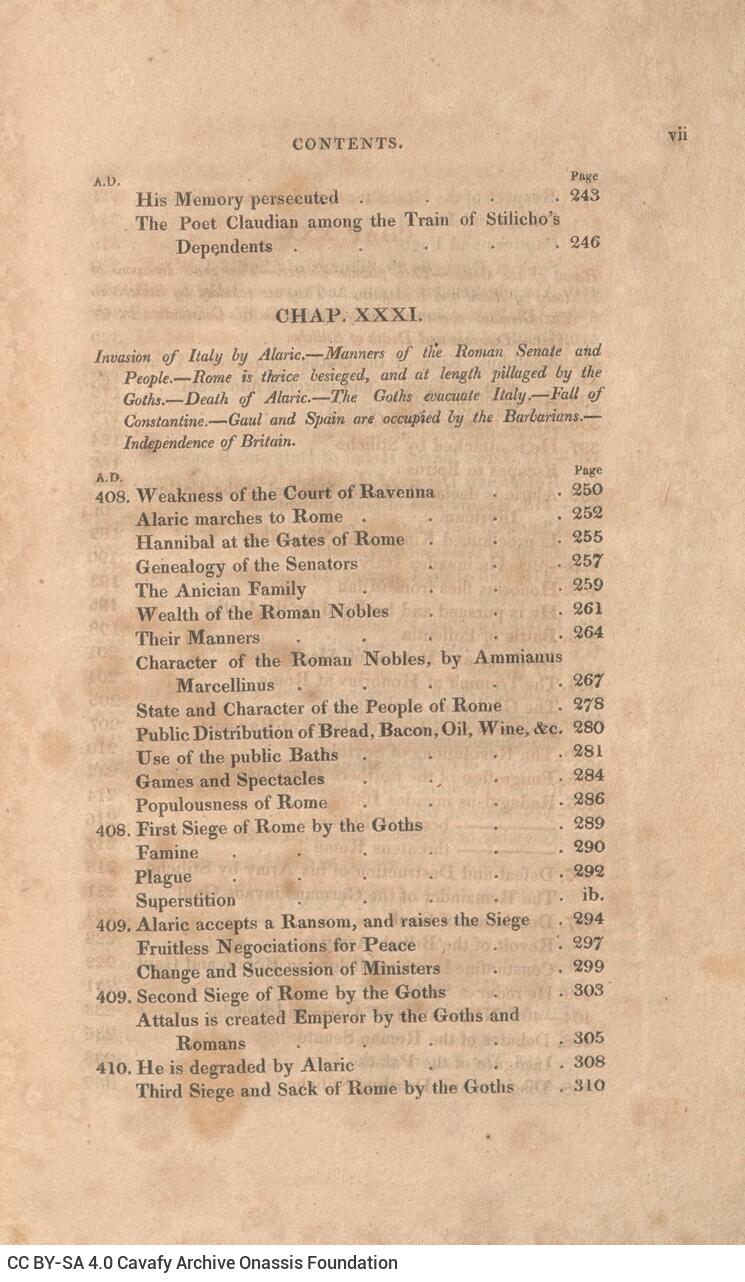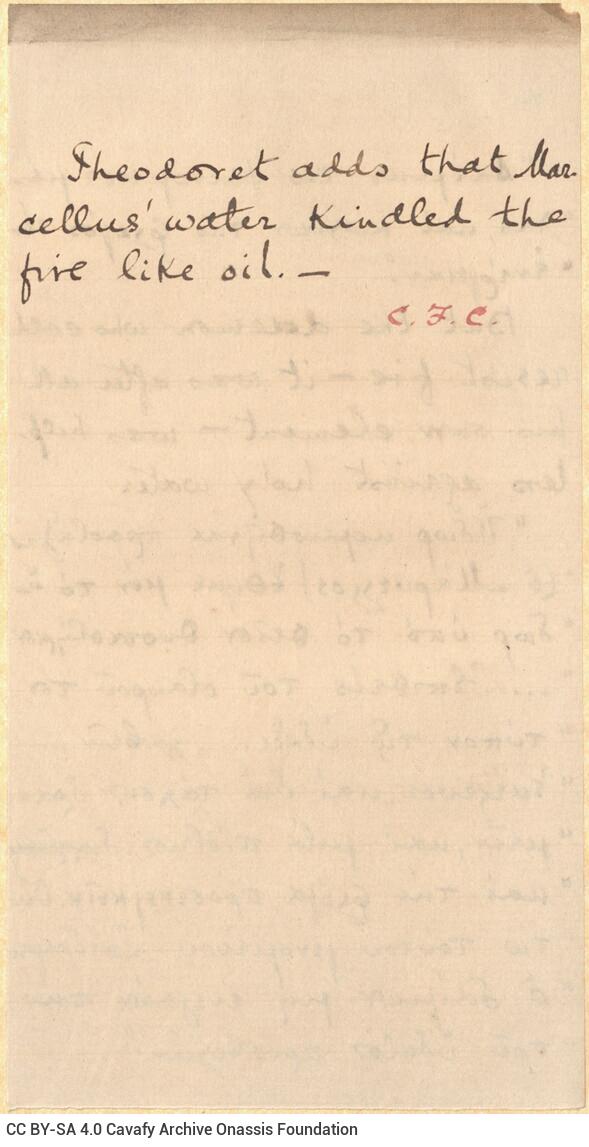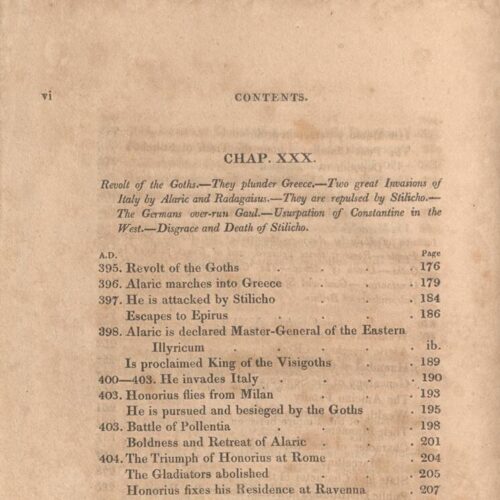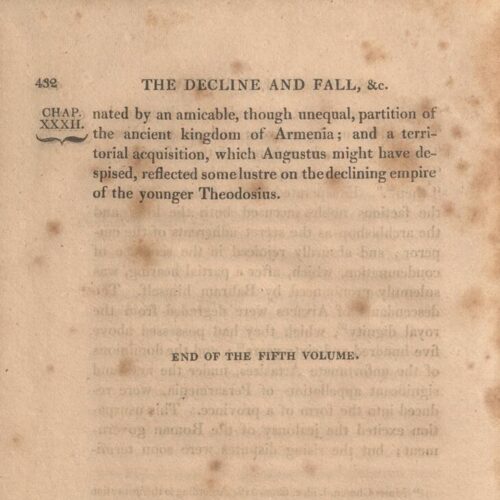Gibbon, Edward. The History of the Decline and Fall of the Roman Empire. Vol. V. London, Printed for T. Cadell and W. Davies […], 1820
underlining
underlining
green fonts
yellow fonts
red fonts
DIGITAL OBJECT DESCRIPTION
- CAVAFY LIBRARY
English
22 x 13.5 cm; 4 s.p. + VIII p. + 432 p. + 2 s.p. + 3 inserts, label with the name of the former owner on verso of the front cover: “Mr. Thomas Bell”. On l. 1 bookplate CPC on recto, p. [Ι] title page, p. [ΙΙ] typographical data and p. [III]-VIII “Contents”. Pencil marks on p. 106, 179, 335. C. P. Cavafy’s handwritten notes in black ink inserted between p. 106-107, 178-179 and 334-335 regarding traits of the text, where he signs as “C.F.C” on the first one and as “C.” on the other two. Reading trace and underlining with pencil on p. 401. P. 432 colophon.
CPC
Thomas Bell
The inserts and handwritten notes found in Edward Gibbon’s volumes were transcribed for the first time by Diana Haas. See Diana Haas, “Cavafy’s reading notes on Gibbon’s ‘Decline and Fall”, Folia Neohellenica 4 (1982), 25-96.
ACCESS POINTS
Metadata in machine-readable format
C.P. CAVAFY LIBRARY:
Books in English
Previous book - The History of the Decline and Fall of the Roman Empire
Next book - The History of the Decline and Fall of the Roman Empire













































